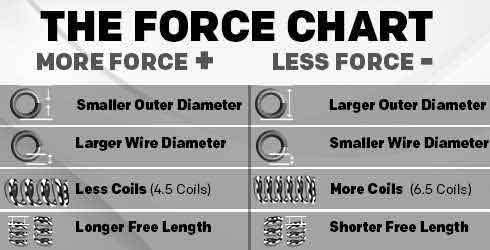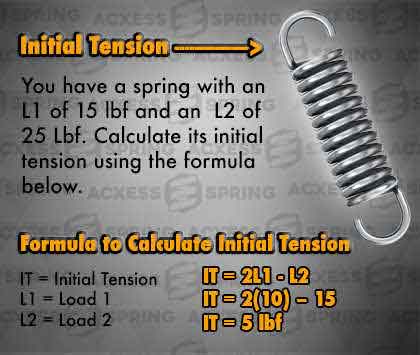High Tension Springs
Definition:
Extension springs with a high amount of tension, therefore taking a strong load to extend it.
Also known as heavy duty tension springs.
At China Spring Products Corp we are able to increase your extension spring’s amount of tension. Our highly experienced spring engineers will work with you on your tension spring design in order to make sure that your spring can resist a large amount of load, therefore making this a high tension spring.
The force chart shows what adjustments will increase the force of your high tension spring. To increase the tension (or force) of your spring, you must either increase the wire diameter, decrease the outer diameter, or increase the length of your high tension spring’s body; therefore decreasing the . On the other hand, to decrease the force of your tension spring, you must either make the wire diameter smaller, increase the outer diameter, or make the body length of your spring longer; therefore giving you more coils.

One thing you must be very aware of when it comes to your high tension springs, though, is the initial tension it exerts. This has as much to do with your tension spring design as your spring’s rate does because it will also affect your spring’s working loads.
Initial tension is the tension gathered in between your spring’s coils before it is extended. Initial tension will be released once your spring has been extended to the point where you can see light in between the coils. To calculate your spring’s initial tension, you must extend your spring enough to where you can see space in between the coils (this will be your L1). Then, extend your spring the same amount of distance (this will be your L2). Multiply the value of L1 by 2 and subtract the value in L2 from the previous calculation. This will give you your tension spring’s initial tension. The formula and explanation to calculate your high tension spring’s initial tension is provided below along with the diagram to the right.
Formula:
IT = 2L1 - L2
IT = Initial Tension, L1 = Load 1, L2 = Load 2
Example:
If you have a spring that travels:
0.5” of Distance Traveled @ 1.0 lbf and
1.0” of Distance traveled @ 1.5 lbf
Then:
IT = 2L1 – L2
IT = 2(1)-1.5
IT = 0.5 lbf





 Español
Español